Health Alterations: Angina Pectoris Nursing Care Group Presentation
VerifiedAdded on 2022/09/22
|7
|521
|22
Presentation
AI Summary
This presentation addresses angina pectoris, a condition characterized by transient myocardial ischemia, discussing its symptoms, causes, and impact on patients and their families. It outlines essential nursing care, including symptom reduction, medication administration, and patient education. The presentation further explores the financial and psychological burdens of angina, its effects on quality of life, and the need for multidisciplinary team approaches. It also covers non-pharmacological interventions, diagnostic plans, and psychosocial support, offering a complete overview of the condition and its management. The presentation is a valuable resource for nursing students studying health alterations and cardiovascular health.
1 out of 7
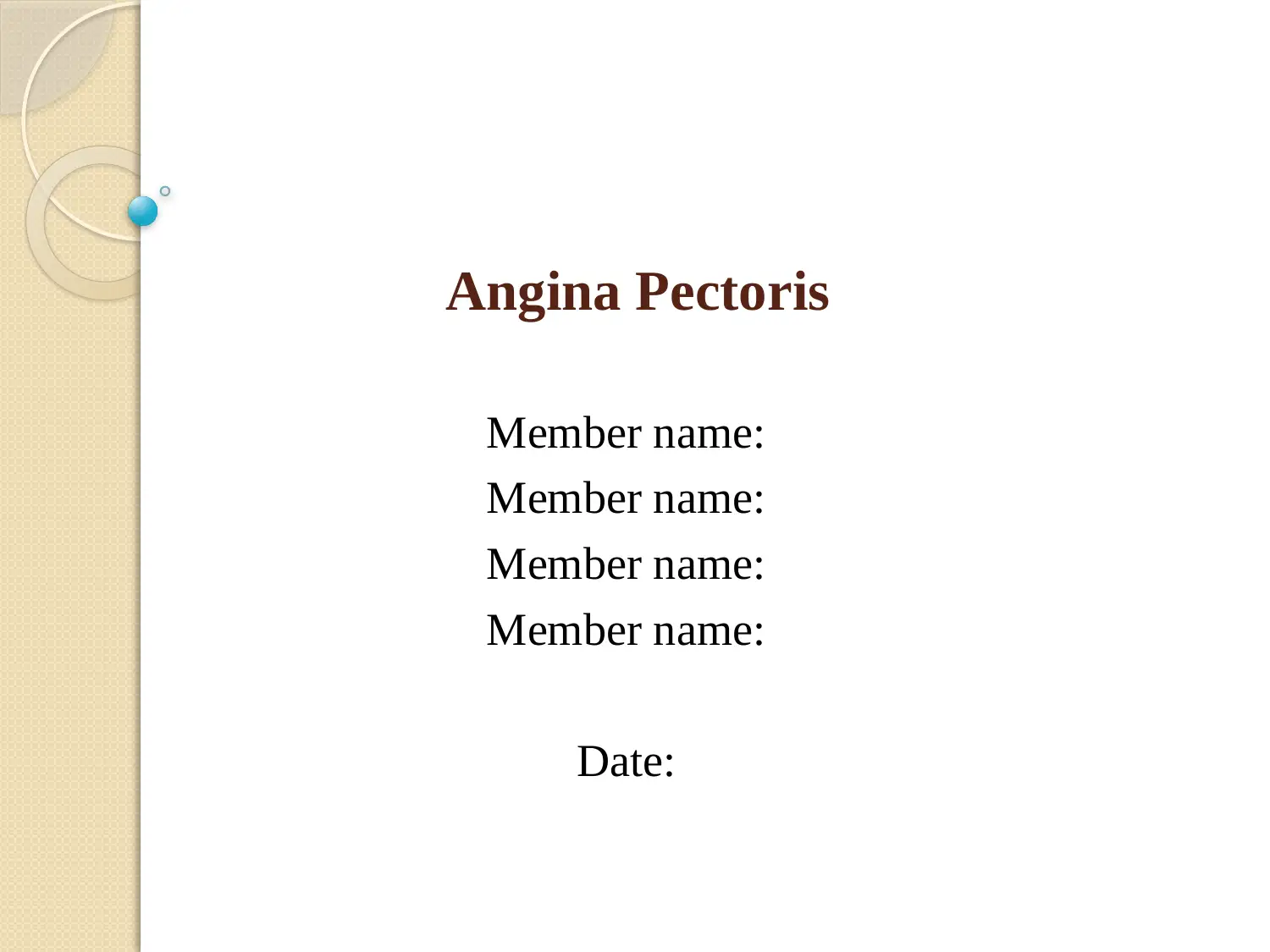
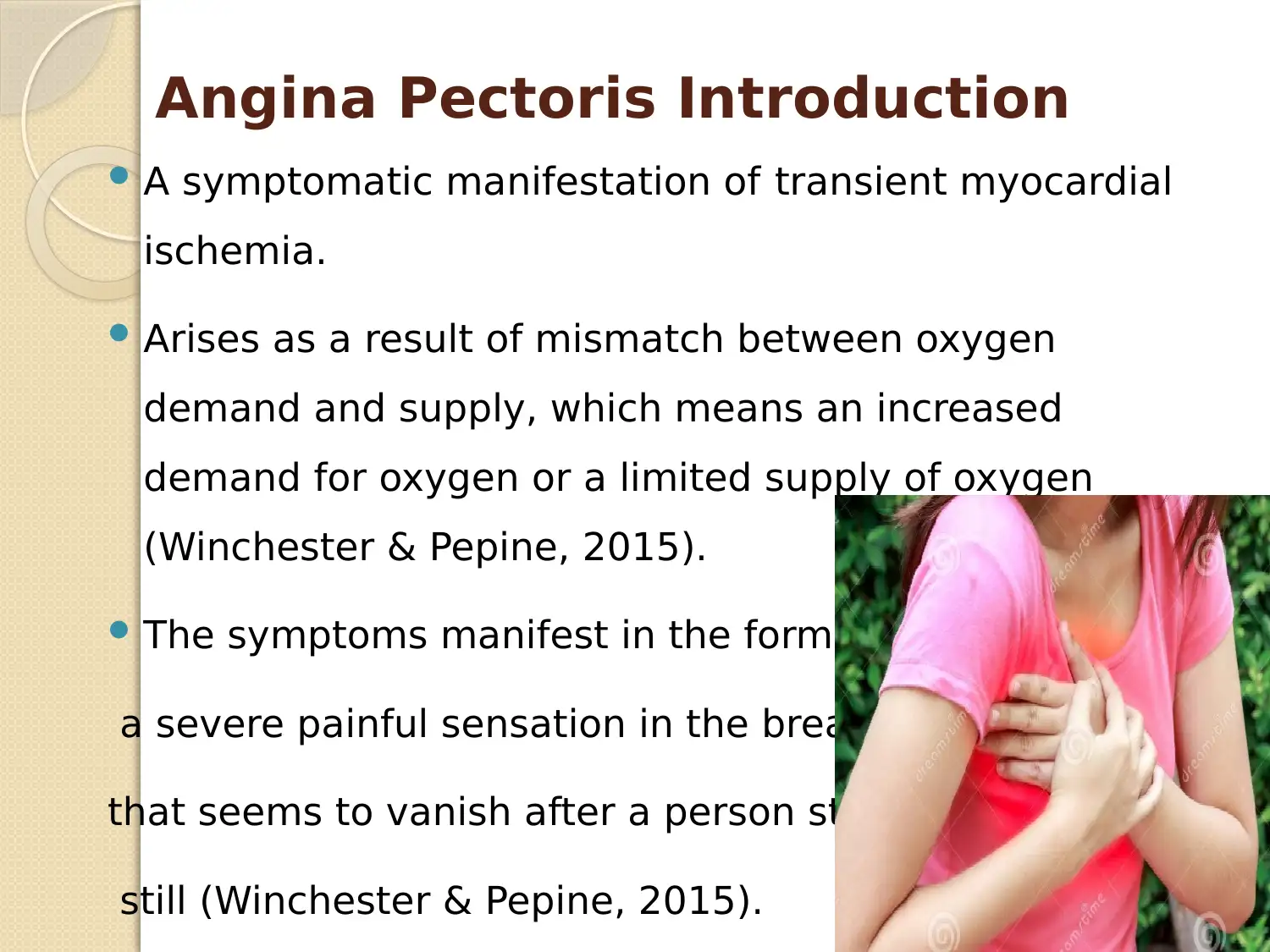
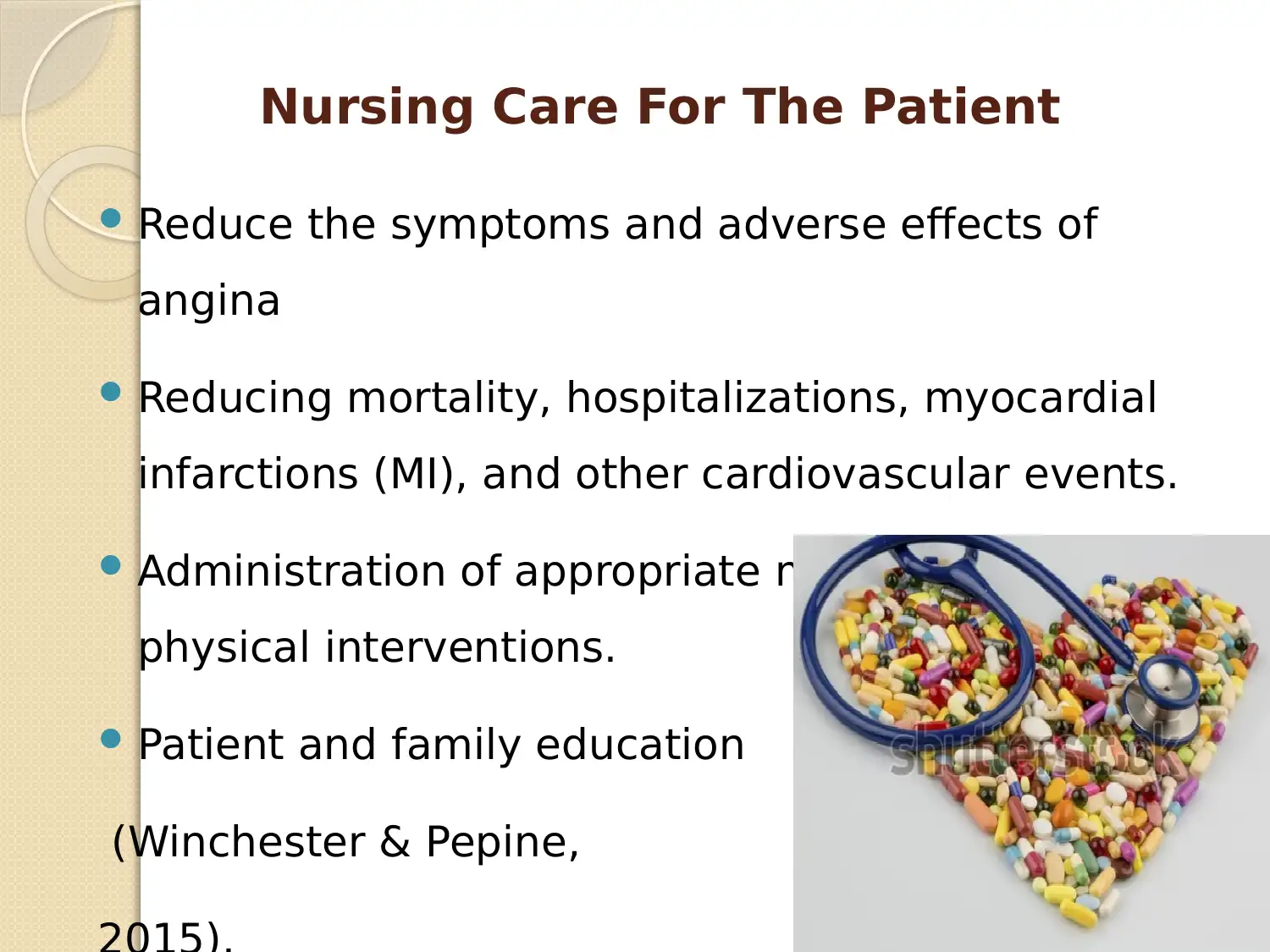

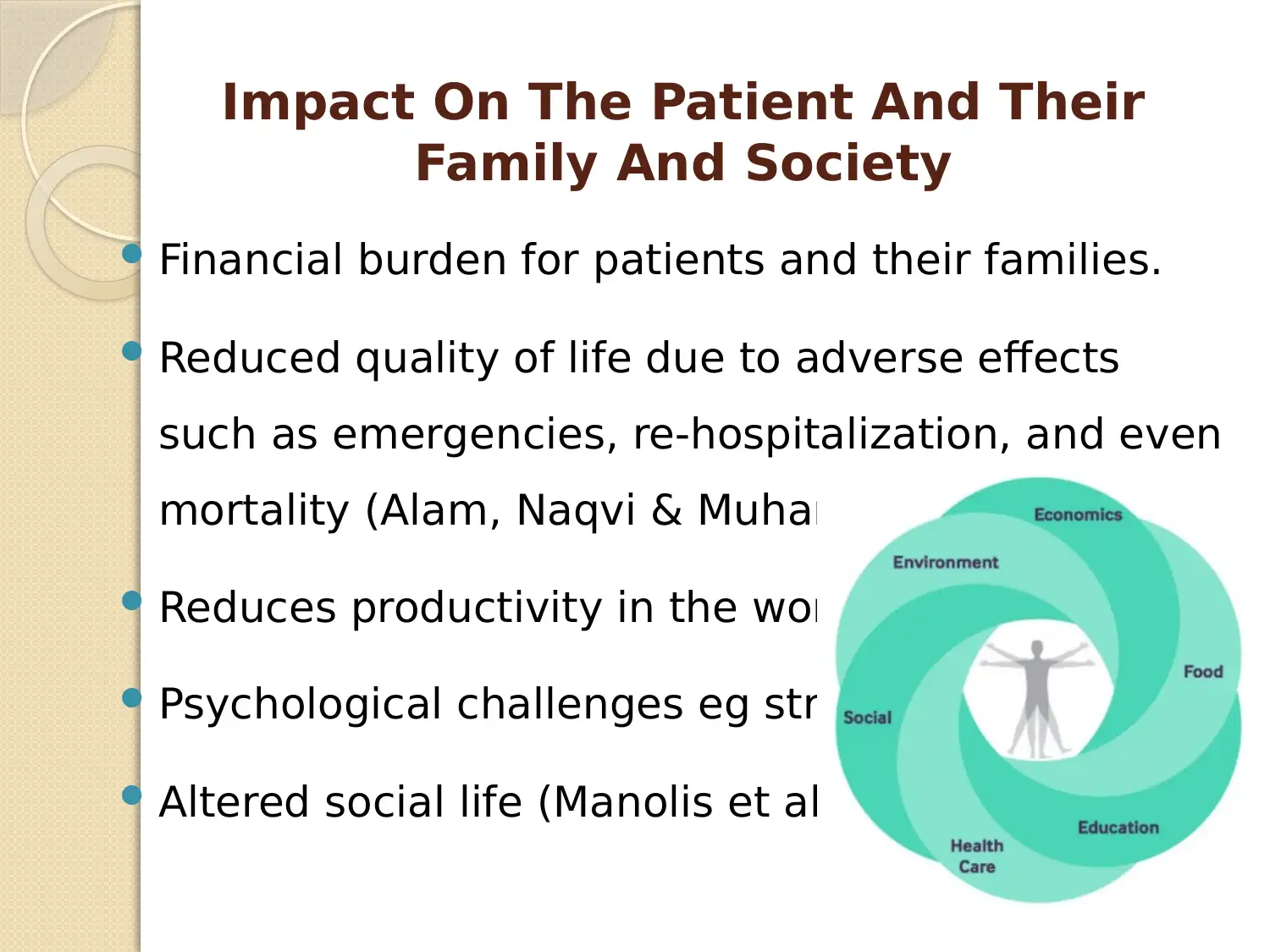
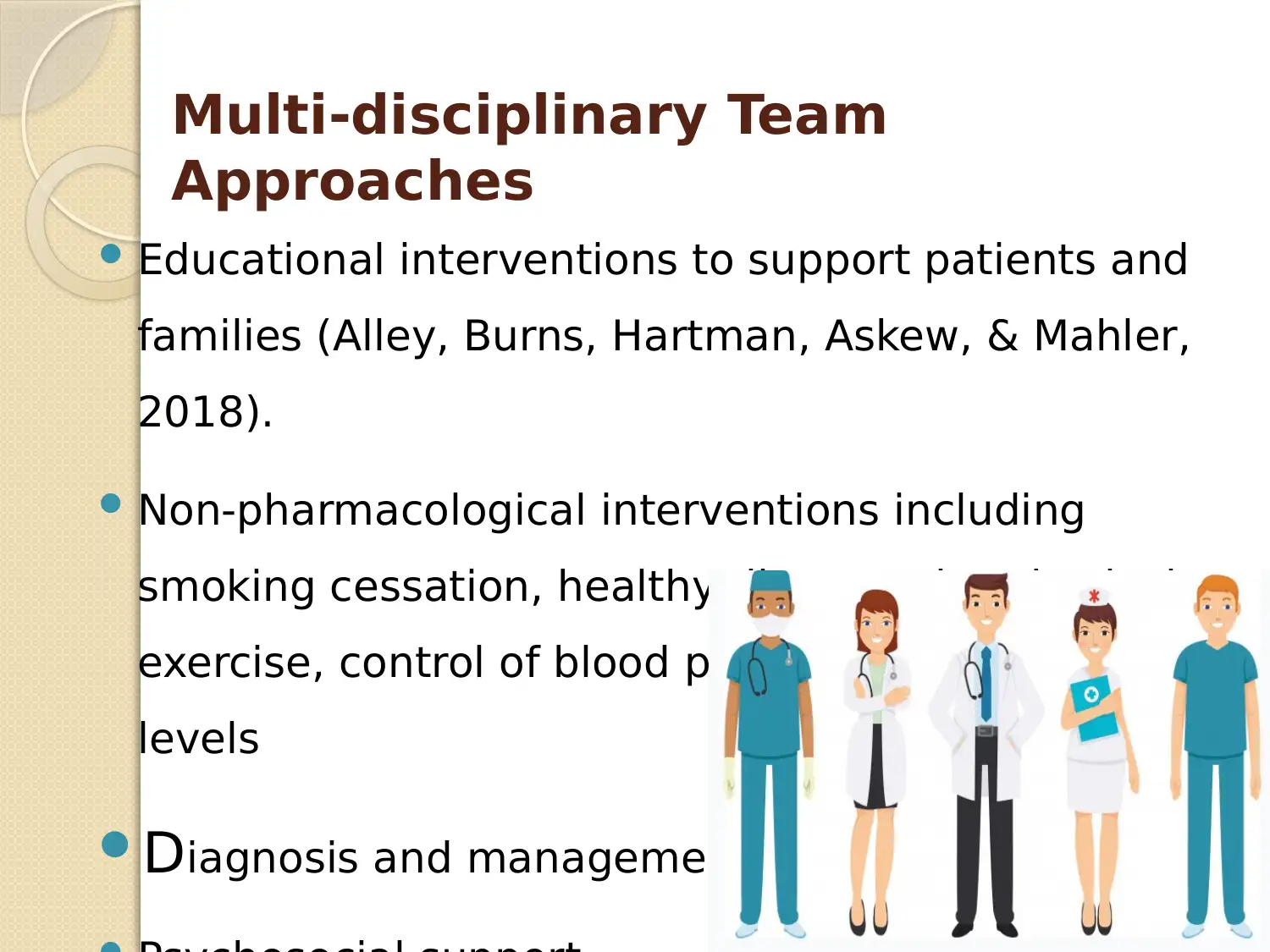
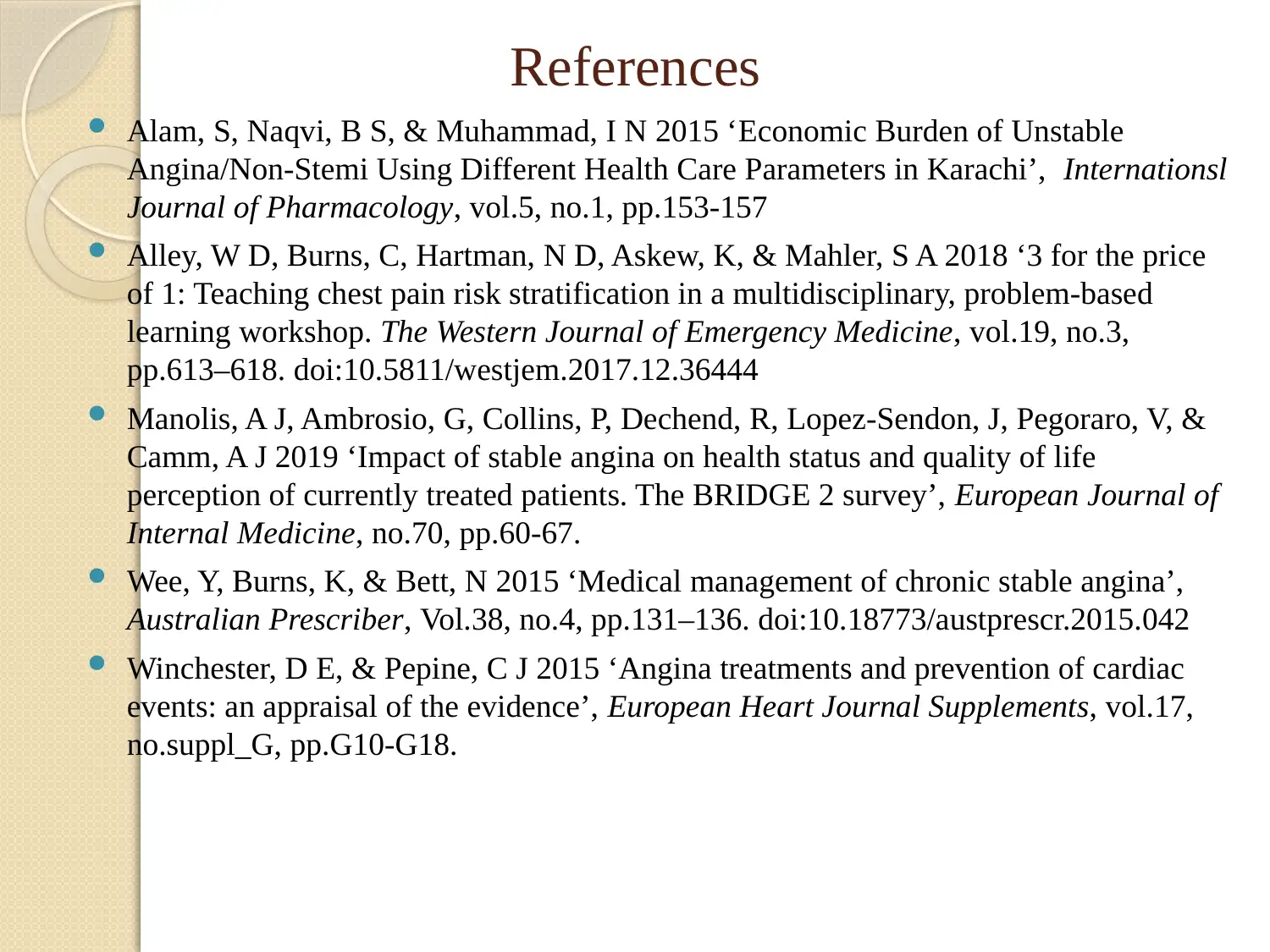

![[object Object]](/_next/static/media/star-bottom.7253800d.svg)